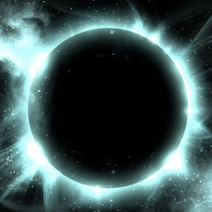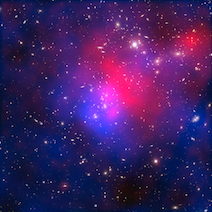One of the great challenges of modern physics is to reconcile quantum mechanics and relativity. Black holes are an excellent example of the incompatibility between the two theories, and quantum theorists have proposed various alternatives. While they all remain purely hypothetical, they also all seem much weirder than black holes themselves… Let’s take a look at them.
Before getting into the thick of things, what makes black holes incompatible with quantum theory? There are two things to consider: the information paradox, and the singularity at the heart of a black hole.
According to general relativity, when matter falls into a black hole, all information is lost and disappears into a singularity: many different physical states evolve into the same state. In quantum theory, quantum information must be conserved: complete information about a physical system at one point in time should determine its state at any other time. This incompatibility is known as the information paradox.
Another problem comes from the singularity at the center of a black hole: it has zero volume, and spacetime curvature is infinite. This is not possible in quantum physics, which requires absolute time, for example.
Gravastar
Pawel Mazur and Emil Mottola proposed an alternative to black holes in 2001, incorporating quantum mechanics in general relativity. To do so, they imposed to the Universe the Planck length as the smallest size possible, according to quantum theory: this length is derived using the speed of light, Planck’s constant and the gravitational constant.
When a star collapses under its own gravity, it results in the formation of an extremely compact object. Because of the limits imposed, there is a region of “immeasurability” surrounding the center of the object, a gravitational vacuum: it is literally a void in the fabric of spacetime. Outside this region would be a very dense form of matter, called Bose-Einstein condensate. An outside observer would see a the core of a gravastar as a Bose-Einstein condensate, extremely cold due to the severe redshifting of spacetime. Externally, a gravastar would appear strictly identical to a black hole.
But it doesn’t stop here… Infalling matter hitting the shell is converted into energy; inside the shell, a small amount of the energy is converted back into matter. A soon as the matter is formed, the repulsive force of the internal vacuum energy pushes on the particles, which then race away from each other at ever-increasing speeds.
Doesn’t that remind you of anything?.. Matter appearing “out of nowhere” , pushed away faster and faster… That’s the Big Bang. In other words, we would be inside a gravastar!
Dark Energy Star
In 2005, physicist George Chapline claimed that black holes almost certainly don’t exist, relying on quantum mechanics. Instead, they would be dark energy stars: infalling matter is converted to dark energy (which is here assumed to be vacuum energy) as matter crosses the event horizon.
In a dark energy star, matter approaching the event horizon keeps decaying into lighter particles, including proton decay close to the event horizon (this would be a possible explanation for high energy cosmic rays). As it passes through the event horizon, the energy equivalent of part or all of that matter is converted into dark energy. Because of its negative pressure, singularities cannot form and no information is destroyed.
Such stars could also potentially explain dark matter, as “primordial” dark energy stars could be formed by fluctuations of spacetime itself.
Fuzzball
In superstring theory, fuzzballs are supposed to be the true quantum description of black holes. Samir Mathur and Oleg Lunin proposed that black holes are not a singularity, but a sphere of strings – the ultimate building blocks of matter and energy – with a definite volume. A fuzzball can be regarded as the most extreme form of degenerate matter. Unlike black holes, the event-horizon of fuzzballs wouldn’t be clearly defined, rather fuzzy, hence the name “fuzzball”.
Fuzzballs are exactly like black holes: anything crossing the event horizon will not be able to escape; they only differ internally. When more matter falls onto a fuzzball, strings fuse together: all the quantum information of the infalling strings becomes part of larger, more complex strings.
Here, both the information paradox and the gravitational singularity are avoided. According to their proponents, this makes fuzzballs the true quantum description of black holes.
Of course, these are only hypotheses, and black holes might be yet something different. Or quantum theory itself may be incomplete and currently unable to explain black holes. There is still a long way before relativity and quantum mechanics can be reconciled. Meanwhile, both theories have proven themselves extremely accurate… You thought black holes were strange? Quantum theory made them even stranger.



